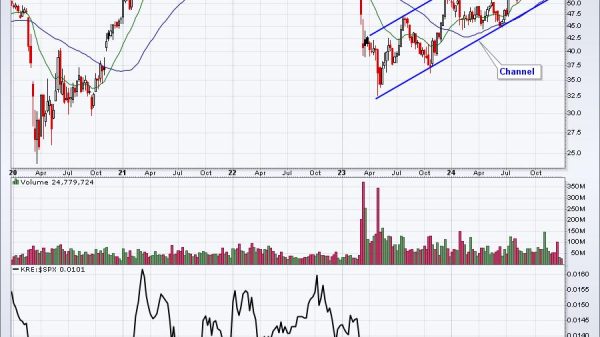Travis Fisher
The Inflation Reduction Act (IRA) offers a master class in implementing expensive, counterproductive, and highly partisan energy policy. In previous posts, I discussed 1) how the electricity generation subsidies in the IRA could cost taxpayers $2.5 or $3 trillion and 2) why policymakers should remove those subsidies before expanding the high‐voltage transmission system. As we count the reasons why repealing the energy subsidies in the IRA is a good idea, let’s also consider their interaction with the Environmental Protection Agency’s (EPA’s) proposed power plant rule.
It is technically true that, as Senator Joe Manchin has said, “[n]either the Bipartisan Infrastructure Law nor the IRA gave new authority to regulate power plant emission standards.” However, the IRA did provide the foundation upon which the EPA has built its power plant regulation by subsidizing the technologies that enable the new standards. Consequently, lawmakers who oppose the EPA’s overreach should consider repealing the energy subsidies in the IRA.
What is the EPA’s New Power Plant Rule?
Proposed in May of this year, the EPA’s new power plant rule looks a lot like the Clean Power Plan (CPP), which was struck down by the Supreme Court last year in the landmark case West Virginia v. EPA. Some have referred to the new rule as CPP 2.0, which is a much shorter name than the 39‐word title the EPA gave it (“New Source Performance Standards for Greenhouse Gas Emissions from New, Modified, and Reconstructed Fossil Fuel‐Fired Electric Generating Units: Emission Guidelines for Greenhouse Gas Emissions from Existing Fossil Fuel‐Fired Electric Generating Units; and Repeal of the Affordable Clean Energy Rule”).
Many analysts believe, as I do, that CPP 2.0 ultimately will be struck down or rescinded for at least three reasons: 1) it will cause electricity prices to skyrocket, 2) it will exacerbate a looming grid reliability crisis (according to grid operators), and 3) it is a regulatory overreach just like CPP 1.0. (For a more thorough examination of the flaws in the CPP 2.0 proposal, see this set of joint comments submitted in the EPA docket.)
Although a final rule has not yet been published, I have no faith that the EPA will heed any of the recommendations offered by commenters on the proposal. After all, the EPA was rebuked just last year by the Supreme Court, yet its next action under the same statute—section 111 of the Clean Air Act (CAA)—once again violates the Major Questions Doctrine, the same doctrine invoked to invalidate the EPA’s CPP 1.0.
In other words, if the EPA won’t listen to the Supreme Court, what are the odds it will listen to commenters?
How EPA Established the Proposed Standards in CPP 2.0
Close followers of the CAA are familiar with the alphabet soup involved in federal air regulations. For the uninitiated, the acronyms and initials may be daunting, but the fundamental concepts are easy to understand. The energy team at the law firm Van Ness Feldman aptly explained the process of regulating pollution under section 111 of the CAA as follows:
CAA section 111 directs EPA to establish standards for controlling air pollutants for categories of major stationary sources, which include electric generating units (EGUs). Section 111 outlines a two‐step process for establishing a standard of performance for emissions from EGUs. Under the first step, EPA determines the “best system of emission reduction” (BSER) for the relevant pollutant that is “adequately demonstrated,” taking into consideration cost, any non‐air quality health and environmental impacts, and energy requirements. EPA then sets a standard that quantifies the “degree of emission limitation achievable through the application” of the BSER. Sources subject to the standard of performance can use any system of reduction to meet the limit; they are not required to use the system EPA determined is the BSER.
In the case of CPP 2.0, the EPA selected two technologies as the BSER used to establish greenhouse gas (GHG) reductions in the electric power sector—carbon capture and sequestration/storage (CCS) and low‐GHG hydrogen. With CCS and low‐GHG hydrogen as the BSER, power plants across the country will have to 1) apply one or both of those technologies or 2) meet the same level of emissions reductions enabled by these technologies in some other way, most likely by simply shutting down power plants.
The CPP 2.0 proposal would impact all power plants that use fossil fuels to generate electricity, chiefly the coal‐fired and natural gas‐fired plants that together provided about 60 percent of the energy on the power grid last year (20 percent from coal and 40 percent from natural gas).
Why the Definition of ‘Adequately Demonstrated’ Matters
The fact that the EPA must choose the BSER using technologies that are “adequately demonstrated” is important because it’s one of the main ways the EPA is held to some measure of realism in crafting its rules. To be clear, CCS and low‐GHG hydrogen are nowhere near “adequately demonstrated” according to the plain meaning of those words. Neither technology is available presently on a commercial scale, and both suffer from severe limitations.
For example, CCS requires a vast network of new pipelines to transport carbon dioxide (CO2) from places where fossil fuels are combusted to places where CO2 can be injected and stored in suitable geologic formations. Given the forceful protests that nearly all linear infrastructure projects face, it is unclear whether that network can be built at all under current law, let alone on the EPA’s timeline. Energy realist Robert Bryce offered the following observation:
[T]he amount of gas involved is staggering. A bit of simple math shows that sequestering 600 million tons of CO2 per year (the number the EPA published in its May 11 press release) would require creating an industry capable of handling a mass of CO2 that’s equal to about 12 million barrels of oil per day. In other words, the EPA’s proposed CCS plan if enacted, would require creating the U.S. oil industry in reverse. (U.S. oil production is now about 12.5 million barrels per day.)
However, under precedent established by the Court of Appeals in the DC Circuit, the EPA can choose as the BSER the technologies it reasonably expects to become available in the relevant timeframe. An “adequately demonstrated” technology is, according to the DC Circuit in Essex Chemical Corp. v. Ruckelshaus (a case cited in the proposed rule at page 33272):
[O]ne which has been shown to be reasonably reliable, reasonably efficient, and which can reasonably be expected to serve the interests of pollution control without becoming exorbitantly costly in an economic or environmental way.
CCS fails the test outlined above because it has not been shown to be reliable, efficient, or cost‐effective. Ditto for low‐GHG hydrogen, which is not only exorbitantly costly but may not be viable without CCS. That’s because 95 percent of the hydrogen produced in the United States today comes from natural gas via steam methane reforming. CO2 is a byproduct of that process, so the vast majority of hydrogen produced would only be “low‐GHG,” if the carbon dioxide byproduct is captured and stored.
Only 1 percent of domestic hydrogen is produced via electrolysis, which does not directly emit GHGs but could rely on electricity from GHG‐emitting sources. (The remaining 4 percent of domestic hydrogen is produced by partial oxidation of natural gas via coal gasification.)
As of 2021, there were over 2,000 natural gas‐fired power plants in the United States. So even if we assume every coal plant will simply close, reconfiguring all the natural gas plants in the U.S. is no small task. Those 2,000 natural gas‐fired power plants provided about 40 percent of the electricity generated in 2022, making natural gas by far the largest energy source on the grid. Whether power plant operators choose CCS or low‐GHG hydrogen to comply with the CPP 2.0, the effort would be something between Herculean and impossible. In no way are the BSER technologies “adequately demonstrated.”
The IRA Allows EPA to Disconnect its Rules from Reality
The energy subsidies in the IRA enable the EPA’s overreach because they allow the EPA to set unrealistic standards. In the CPP 2.0 proposal, EPA relied explicitly on the subsidies in the IRA to claim that the BSER technologies—CCS and low‐GHG hydrogen—are “adequately demonstrated.”
If the technology were actually “adequately demonstrated,” why are the subsidies required in the first place? Presumably, technology that functions as intended and is economically efficient wouldn’t require subsidies to be “adequately demonstrated.” Specifically, the EPA said in the CPP 2.0 proposal:
The legislative history of the IRA makes clear that Congress was well aware that the EPA may promulgate rulemaking under CAA section 111 based on CCS and explicitly stated that the EPA should consider the tax credit to reduce the costs of CCUS (i.e., CCS).
To reiterate the reliance of widespread CCS adoption on IRA subsidies, EPA stated the following on page 33373 of CPP 2.0:
EPA is projecting approximately 12 GW of coal‐fired generation will likely retrofit with CCS in order to meet the proposed January 1, 2030, compliance date for affected long‐term coal‐fired steam generating units. These and other CCS projects that are likely to be occurring in response to the IRA may take up a significant amount of the capacity to plan and build CCS between 2023 and 2030 [emphasis added].
The same analysis applies to low‐GHG hydrogen. Contrary to the observed reality that low‐GHG hydrogen only comprises 1 percent of domestic production, the EPA claims on page 33310 of CPP 2.0 that:
Given the incentives provided in both the IRA and [Infrastructure Investment and Jobs Act] for low‐GHG hydrogen production and the current trajectory of hydrogen use in the power sector, by 2032, the start date for compliance with the proposed second phase of the standards for this rule, low‐GHG hydrogen may be the most common source of hydrogen available for electricity production.
In essence, the EPA claimed low‐GHG hydrogen would transform itself from 1 percent of the domestic hydrogen market to the majority of the market based on lavish subsidies. This is fanciful thinking applied to environmental regulation—the EPA can establish whatever standards it wants if the BSER technology is sufficiently subsidized.
This is a harmful precedent and does not accurately reflect reality. The standard in the CAA that the BSER be “adequately demonstrated” is instead becoming a standard that the BSER be “adequately subsidized.”
Conclusion
The energy subsidies in the IRA provide the foundation upon which the EPA built the CPP 2.0. The BSER established in the EPA’s new power plant regulation is only “adequately demonstrated” by the heavy subsidies in the IRA. Consequently, lawmakers who oppose the EPA’s overreach and want to see a reliable and cost‐effective power grid in the United States should consider repealing the energy subsidies in the IRA.
























